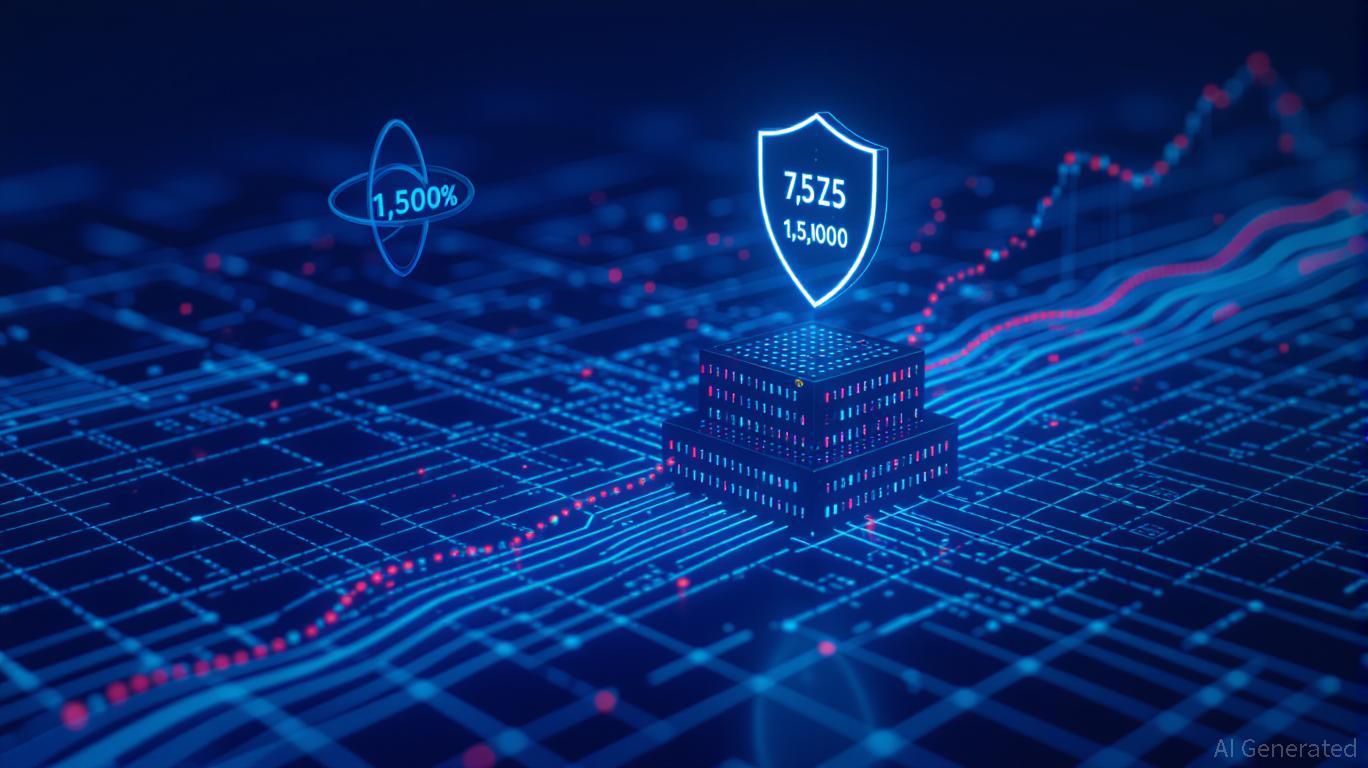As artificial intelligence company valuations climb, industry frontrunners face challenges that put their execution abilities to the test
- UiPath, Palantir, and BigBear.ai lead AI-driven automation and defense tech, securing major contracts and revenue growth through AI integration. - UiPath reports $1.72B annual recurring revenue from AI-enhanced RPA, while Palantir's $1.03B Q2 revenue reflects 48% YoY growth and expanded defense contracts. - BigBear.ai partners with Tsecond for U.S. defense AI infrastructure, leveraging $320B in federal AI funding from the One Big Beautiful Bill. - AIaaS market projected to reach $209.49B by 2033 as cloud
The ongoing AI revolution is fundamentally transforming both enterprise automation and defense sectors, with companies such as

UiPath (PATH) has firmly established itself as a top player in AI-driven automation. The company posted $362 million in quarterly revenue and $1.72 billion in annual recurring revenue, fueled by strong customer uptake of its AI-powered robotic process automation (RPA) platform, according to a
Palantir Technologies (PLTR) has distinguished itself in the AI and defense arenas, with its stock climbing 300% in 2025 alone, based on a
BigBear.ai (BBAI) is establishing itself in the field of autonomous defense technology, recently partnering with Tsecond, Inc. to implement AI-powered edge infrastructure for U.S. national security, as detailed in a
The AIaaS sector is experiencing rapid expansion, driven by cloud-based offerings from providers like Microsoft and AWS. Industries such as healthcare and life sciences are accelerating AI integration for diagnostics and drug development, while businesses pursue cost savings through cloud migration. This movement aligns with the strategies of UiPath and Palantir, both of which focus on scalable AI platforms for a wide range of industries.
For investors, the main message is unmistakable: AI has evolved into a central force behind enterprise transformation. Companies embedding AI into their platforms—whether for automation, defense, or cloud solutions—are positioning themselves to capture substantial market opportunities. Nevertheless, elevated valuations and execution challenges remain important risks to consider.
Disclaimer: The content of this article solely reflects the author's opinion and does not represent the platform in any capacity. This article is not intended to serve as a reference for making investment decisions.
You may also like
Bitcoin Updates: How Crypto Enthusiasts Are Shaping Tomorrow’s Scientific Advancements
- Ideosphere leverages crypto prediction markets to fund high-risk science by redirecting gambling capital to research projects with uncertain returns. - Platforms like Gemini and Polymarket expand into prediction markets, with Polymarket securing $2B backing to enter U.S. markets via PrizePicks partnership. - Regulatory scrutiny intensifies globally, with Brazil and UK imposing stricter crypto oversight to balance innovation with investor protection. - Propanc Biopharma raises $100M in crypto for cancer r

Vitalik Buterin's Latest Advances in ZK Technology and Their Impact on the Market
- Vitalik Buterin's GKR protocol reduces ZK verification costs by 10-15x, enabling ZKsync to achieve 15,000 TPS with near-zero fees. - Ethereum's modexp precompile replacement addresses a 50x scalability bottleneck, aligning with its "Lean Ethereum" efficiency goals. - ZK-based platforms like ZKsync (ZKS +150% in 2025) attract Citibank/Deutsche Bank, while Starknet/Immutable expand ZK into DeFi and gaming. - Institutional adoption highlights ZK's viability for enterprise use, though quantum computing risks

Bitcoin Updates: Renewed Institutional Trust Drives Bitcoin ETFs to Achieve Initial Net Inflows
- U.S. Bitcoin ETFs saw first net inflow ($1.15M) as institutional demand and corporate purchases offset prior $1.22B outflows, signaling market stabilization. - Solana ETFs extended 9-day inflow streak to $575.93M, while Ethereum ETFs faced $46.6M outflows despite BlackRock's ETHA gaining $34.4M. - MicroStrategy bought 487 BTC ($102,557 each) and JPMorgan increased IBIT holdings to $343M, reflecting growing institutional confidence in crypto assets. - Analysts warn inflows may only temporarily counter wha

Ethereum Updates: Large Holders Acquire $1.37B in Ethereum While Short Sellers Face Major Losses Amid Market Division
- Ethereum whales bought $1.37B of ETH at $3,462 as prices hit a four-month low of $3,000 in November 2025. - Aave whale led accumulation with 257,543 ETH ($896M), while Bitmine Immersion added 40,719 ETH ($139.6M). - Exchange reserves fell to 2016 lows as investors shifted to long-term storage, signaling bullish confidence. - Leveraged short traders lost $1.44M-$25M in losses, highlighting risks amid Ethereum's volatility. - Market splits between institutional accumulation and retail shorting, with $3,400
